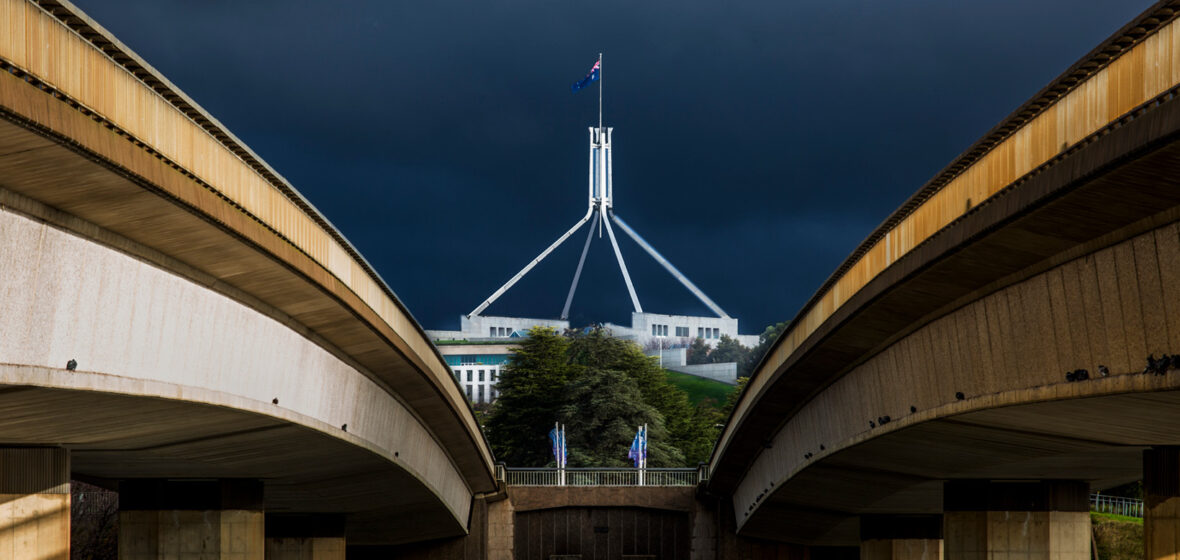Federal Treasurer Jim Chalmers has handed down the Albanese Government’s second Budget. LSJ has compiled the most crucial points for solicitors across NSW and the country.
Treasurer Jim Chalmers has characterised his second Federal Budget since the Albanese Government has been in office as promising support and relief for the millions of Australians struggling through a cost-of-living crisis.
The Budget, released on 9 May, centres on a $14.6 billion cost of living package, in addition to targeted measures to the most vulnerable Australians: older, unemployed individuals, aged care workers, and single parents.
In the lead up to Budget night on Tuesday, the Government highlighted its priority concerns: housing, a revamp of the NDIS system, older Australians on unemployment benefits, and energy costs as priority concerns.
Following the reveal, Chalmers told ABC News: “We’re taking seriously the inflation challenge,” and referred to the cost-of-living package and “responsible economic management” the Budget offers.
Chalmers described the first Budget surplus in 15 years of $4.2 billion as “an historic turnaround.”
Gigi Foster, Professor at the UNSW Business School’s School of Economics, told LSJ, “This budget, like its predecessors, is chiefly an exercise is placating the masses. it contains handouts to various different groups whom the politicians sense will be particularly struggling at the moment due to cost-of-living increases, and whose votes they are hence most worried about. This is a continuation of the Australian cultural habit that when things get tough, the people look to the government to get them out of it, and the government knows this, so they deliver scraps to the masses in order to try to pacify them.”
Here is a summary of announcements from the 2023–2024 Federal Budget relevant to Australia’s legal profession.

Cost of living crisis
Relief measures, detailed below, have been delivered across welfare, health and community legal services, housing, and energy savings.
Foster says, “What is not addressed in the Budget as far as I can see are the structural problems that lie behind the cost-of-living crisis and the underlying stresses in the specific sectors that are receiving help. For example, why is it so difficult for a young person to afford to buy a house, or even to rent, today?”
Instead, Foster says, “we see a combination of subsidies, handouts and allowances for people to combine forces to access more handouts … Some of these supposed ‘cost-of-living relief measures’ will be cancelled out via the higher taxes for low- and middle-income earners that we’ve also been told will be part of the Budget. It’s smoke and mirrors, as usual.”
Cyber security
The Budget includes a range of measures around cyber security, including:
- $2 billion in government digital solutions
- $86.5 million for an anti-scam centre, supporting ASIC’s anti-investment-scam work and establishing an SMS sender ID registry
- $44.3 million for the Office of the Australian Information Commissioner (OAIC), to support the new Privacy Commissioner and enhance regulatory and analytic capacity.
Lyria Bennett Moses is Director of the UNSW Allens Hub for Technology, Law and Innovation and a Professor and Associate Dean (Research) in the Faculty of Law and Justice at UNSW Sydney. She is also Faculty lead in the UNSW Institute for Cyber Security.
She says, of the $88.8 million allocated to supporting the consumer data right, “I was pleased to see that this includes a cyber-security uplift.
“Funding to the OAIC is welcome, particularly given that data protection is important not only for its own sake but also because it is an essential ingredient for cyber security. Less data circulating about me, and more secure storage of that data, reduces my risk of identity theft and scams.”
“The proposed in-house cyber warden training program is an intriguing idea, and I look forward to hearing more as it develops. It seems this focuses on response rather than prevention, but possibly increased awareness and planning will ultimately assist with both.”
Community services
The Government will provide an extra $4 billion to help pay the wages bill for government and community organisations which provide critical services to the elderly, veterans, survivors of family violence and other vulnerable groups. This is on top of the $560 million announced in October to support community services.
The Budget also includes a mechanism for providing extra funds to support the indexation of wages for workers on programs that include: Commonwealth Home Support; Veteran Home Services; community legal centres; First Nations healthcare; social housing and homelessness services; and programs to reduce violence against women and chronic disease support.
Finance Minister Katy Gallagher said: “The Government is improving the way government programs are indexed, allowing organisations to keep their doors open, addressing rapid cost pressures for the service providers who support the most vulnerable people in the community.”
Ending violence against women and children
The Budget delivers an additional $68.6 million over 2 years to support Family Violence Prevention Legal Services Providers to provide legal and non-legal services to First Nations victim–survivors of abuse.
This is part of an overall allocation of $589.3 billion towards women’s safety under the National Plan to End Violence Against Women and Children 2022–32.
- Further, $159 million will go towards extending the Family, Domestic and Sexual Violence Responses National Partnership Agreement.
- An amount of $194 million, dedicated to the Aboriginal Torres Strait Islander Action Plan, includes $23.2 million on the delivery of place-based, trauma-aware and culturally responsive healing programs, $17.6 million on family safety initiatives, and $11.8 million on a standalone First Nations National Plan for Family Safety.
Single parents and principal carers
According to Minister for Social Services Amanda Rishworth, “Reduced opportunities to participate in paid work, coupled with the additional costs associated with raising children, make single parent households more vulnerable to economic insecurity.”
The Budget raises the age cut-off for the Parenting Payment (Single) from 8 to 14 in recognition that “many single parents – overwhelmingly women – face difficulty balancing caring responsibilities and work. These difficulties do not end when their child turns eight.”
These changes mean that eligible single parents currently on JobSeeker will receive an increase to payments of $176.90 per fortnight. More than 90 per cent of parents who will benefit from this change are single mothers. The Government claims that these changes will enhance the financial support to 57,000 single principal carers, including 52,000 women and around 5,700 First Nations carers, representing a $1.9 billion investment through to 2026–27.
Rishworth said, “Labor’s changes will support more single parents and their children to ensure they have the safety net they need and that they are supported to re-enter the workforce when their children get older.”

Housing
A scheme allowing couples to buy a house with just a five per cent deposit will be expanded. A “‘couple”’ will encompass “any two individuals” – including siblings and friends, rather than just married and de facto couples. The endemic problems facing renters, with a lack of affordable and accessible housing – on top of rising costs of living – has not been comprehensively addressed. Still, there are reasons for optimism, says Foster.
“I do hold out some hope for the social housing component of the Budget, although I expect it will be minimal and go easy on the property developers, who hold significant power to increase housing supply. They are also a powerful lobby group.”
Aged care
Workers in the beleaguered aged care sector will receive a 15 per cent pay rise from July, one of Labor’s key pre-election promises.
Professor Susan Kurrle AO is the Curran Professor in Health Care of Older People in the Faculty of Medicine and Health at University of Sydney. She is also the Clinical Director at Northern Sydney Local Health District Aged Care and Rehabilitation Network.
“I supported 25 per cent because of the huge change in the role and requirements of the care workers in aged care over the past 10 to 15 years as residents have become much more complex in terms of medical conditions, and the skill levels of staff have reduced as registered nurses were seen as a luxury rather than a necessity,” she says.
Still, the rise in pay rates is welcome, she adds.
“I think the measure will improve care, in that it will encourage workers who were good but left aged care because they could earn more elsewhere.”
Climate change and energy
A new national Net Zero Authority will be created, to help steer the Australian economy away from fossil fuels. Additionally, tax concessions for big gas companies will be capped, and these companies will also face tougher tax compliance measures.
Dr Tim Neal, Senior Research Fellow at the UNSW Business School’s School of Economics, says, “The net zero authority as it is currently envisioned seems entirely concerned with compensating the small number of people that will lose out to a transition to a net zero economy. While there is usually a strong economic argument for doing something like this, akin to the retraining and assistance packages developed when tariffs were reduced significantly in Australia, as far as I understand this won’t have a direct impact on the actual reduction of emissions in Australia.”
What Neal would like to see as a priority is the end to deforestation in Australia.
“Not only will that assist the many threatened species we have in the country, it will also meaningfully reduce our direct emissions. Particularly after the bushfires in 2019–20, many ecosystems and species in Australia require immediate assistance to rebound strongly.”

Defence
In response to the Defence Strategic Review’s call for an overhaul of spending and strategy, a major injection of $19 billion will be allocated. The Government has tried to mitigate concerns by claiming that it’s saving $7.8 billion of that by scrapping or winding back around 30 projects, which do not represent value for money.
Superannuation
Pre-budget reforms had already taken place this month, with Chalmers releasing a statement on May 2 regarding superannuation reforms.
From 1 July 2026, the Government will require super to be paid on payday, a reform that it argues will benefit the retirement incomes of millions of Australians.
That reform will require employers to pay their employees’ super at the same time as their salary and wages.
The Government says this change will particularly benefit those in lower paid, casual and insecure work, the majority of whom are women.
In his statement, Chalmers says: “While most employers do the right thing, the Australian Taxation Office (ATO) estimates $3.4 billion worth of super went unpaid in 2019–20. To further strengthen the system, the ATO will receive additional resourcing to help it detect unpaid super payments earlier and the Government will set enhanced targets for the ATO for the recovery of payments.”
Health
With a $5.7 billion investment in Medicare, the Government has tripled the bulk-billing incentive, enabling 11.6 million Australians to access medical care with no out-of-pocket expenses. A Budget amount of $737 million will also address smoking and vaping, $586.9 million will be directed to mental health and suicide prevention, and $818.5 will address First Nations health issues.
Welfare support
The base rate of income support payments, including JobSeeker, Austudy and Youth Allowance, is being increased by $40 per fortnight for an eligible 1.1 million income support recipients as part of a $4.9 billion dollar investment over 5 years.
JobSeekers over 55 who are long-term unemployed (receiving the support payment for 9 months or longer) will be eligible for $92.10 per fortnight, which previously was available only to those aged 60 plus. This is predicted to serve around 52,000 eligible Australians.




